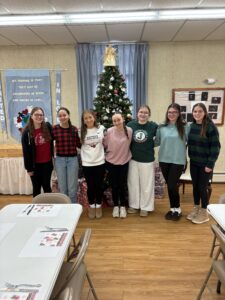Spotted Lanternfly ‘Slowly Moving This Way’
- A tree of heaven is an aggressive and invasive deciduos tree. Submitted photo
- A spotted lanternfly can do damage to grape vineyards. AP photo

A tree of heaven is an aggressive and invasive deciduos tree. Submitted photo
The spotted lanternfly, an invasive species native to Asia, is slowly making its way to New York state.
The pest is what’s known as a plant hopper bug, and can migrate by hopping on plants or other types of landscape. It is believed that it first arrived on a landscape rock years ago.
People in southeast Pennsylvania first took notice of the spotted lanternfly in 2017 when entire vineyards were found destroyed. The insect eats mostly grapes, grape vines and another invasive plant species called tree of heaven, which looks similar to sumac.
“This will be detrimental to the grape and wine industry,” said Jennifer Phillips Russo, viticulture extension specialist and Lake Erie Regional Grape Program team leader. “We’ve been dealing with it since 2017. Penn State has been doing research and it has slowly gained interest and the needed tools to begin to deal with this problem. But, there is already an established population in New York state in places like Long Island. It’s slowly moving this way.”
Russo and her team already have been working with the New York State Integrated Pest Management and other specialists at Cornell to try and catch the invasion of the insect before it’s too late.

A spotted lanternfly can do damage to grape vineyards. AP photo
“The spotted lanternfly is mainly focused on reproducing, and it’s really good at it,” Russo said. “We are trying to catch it before the numbers get too high. If we get caught by surprise like in Pennsylvania, it can be devastating. It’s not if this bug is coming, it’s when.”
Recently, the tree of heaven has been discovered along the Chadakoin River’s banks, as reported from the Chautauqua Watershed Conservancy to the Jamestown City Council on Monday. Roughly 120 trees were discovered, with 1,200 beginning to sprout. Traps and pesticides have already been put in place in case of the arrival of the spotted lanternfly, with Jamestown now labeled as an early-warning area.
“This species is a plant hopper,” Russo said. “It wouldn’t be so bad if it was only one or two, but in the vineyard in Pennsylvania — and I went and saw this myself — there were over 40 bugs on every vine. There have been reports of over 400.”
The spotted lanternfly is known to feed on grapevines, taking a toll on the health of the vines. At the moment the insect threatens a $6.65 billion economic impact.
“They’re easy to kill, but there’s so many,” Russo said. “And it’s not just grapes, they can get all sorts of other agricultural commodities. Life is just harder with this bug around.”
With the insect already spotted in places such as Ithaca and northeastern Pennsylvania, Russo said the problem may only get worse. “I expect we will see more adults in the area by the next growing season,” Russo said.
If looking for a spotted lanternfly locally, finding a tree of heaven may lead to the right spot.
“It looks like sumac, and the bark itself resembles cantaloupe,” Russo said. “Don’t go removing every tree of heaven if you find them, instead report it. They also have leaf scars that form a heart.”
While there are many organizations to contact locally that are working to spread the information, there is another worry for the spotted lanternfly.
“Bugs with bright colors are toxic,” Russo said. “This bug, particularly in its four-star state, is bright red and spotted. There are still studies being done, and nothing scientific yet that confirms whether or not accidentally ingesting one, like if it is killed or remains on a grape and then goes into wine, can be toxic to humans. There is a worry about that, but there is research underway.”
To report a sighting of a spotted lanternfly, send an email to the New York State Department of Agriculture and Markets at spottedlanternfly@agriculture.ny.gov.







